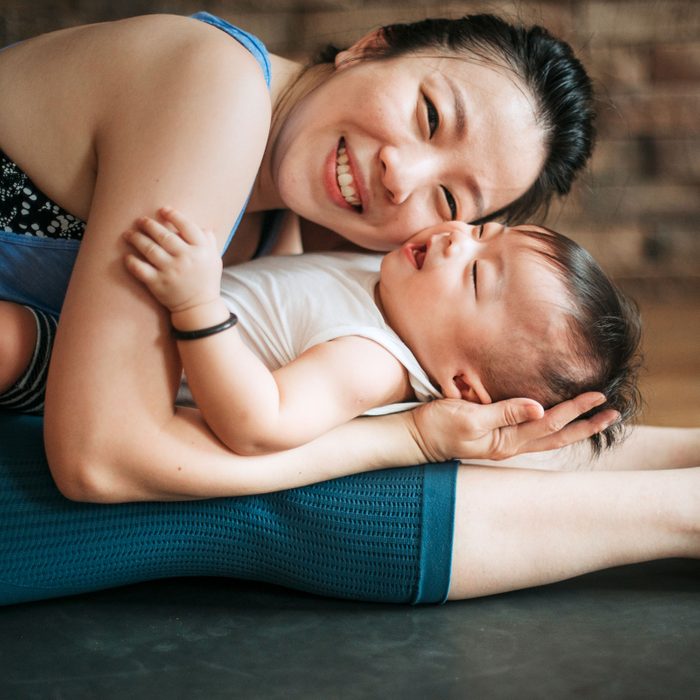
Navigating the whirlwind of new parenthood calls for plenty of crucial resources that aren’t always available. Sleep and dedicated “me time” are usually chief among them. Missing your pre-pregnancy body can be a common change that a lot of new child-bearing parents experience.
If your ability to exercise is limited, one extremely worthwhile way to spend that precious time alone is engaging in postpartum yoga, which can help facilitate a comprehensive path to recovery. On a physical level, postnatal yoga works its magic by rejuvenating strength and flexibility, honing in on areas like the pelvic floor, abdomen, and back—zones that undergo remarkable transformations during pregnancy and labor.
Ahead, YogaRenew Vinyasa & Prenatal Yoga Teacher, Melie Purdon, shares four postpartum yoga poses to help you strengthen your core. The regimen Pardon shares here comes complete with careful instructions and the specific benefits each pose can yield for your body.
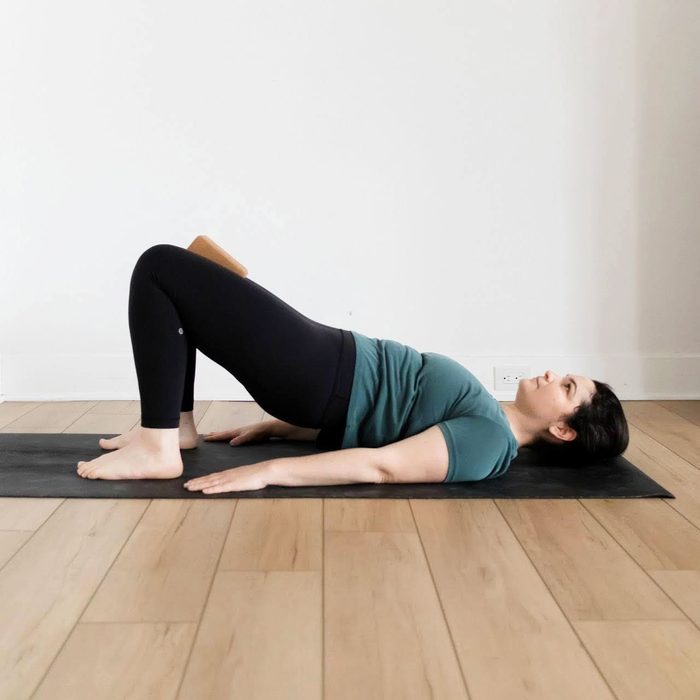
Postpartum yoga poses
1. Transverse abdominis (TVA) breath in supported bridge pose
How to:
- Lay down on your back with your legs bent and your feet on the floor.
- Place a block on the narrow width between your inner knees.
- Place your arms alongside you, palms facing the floor.
- As you breathe in through your nose, lift your pelvis off the floor. Keep your shoulders relaxed.
- As you breathe out through your mouth, squeeze the block between your inner legs thinking about zipping up the space from your pubic bone to your sternum, and from your ribs to your midline.
Benefits:
“As a brand new mom, anything that I can do while laying on my back is a win,” Purdon says. “TVA breath is one way you can reconnect with your deep core postpartum because before we can straighten our core, we must figure out where it is and how it’s doing! Core postpartum needs to be debunked. Crunches will actually hinder your recovery. You must think of your abs as a whole system that not only includes rectus and transverse abdominal muscles but first and foremost the deeper layer that connects to your pelvic floor muscles. By doing this bridge exercise with the support of the block, you reconnect with ease with that deep core and pelvic floor muscles.”
Purdon adds, “The advantage of elevating the pelvis in this exercise is that it takes the weight off the pelvic floor so you can concentrate on the healing without stressing the tissues. This makes it an appropriate pose to practice as early as hours postpartum.”
A Bone Health Doctor Just Listed the 12 Best Yoga Poses to Strengthen Bones
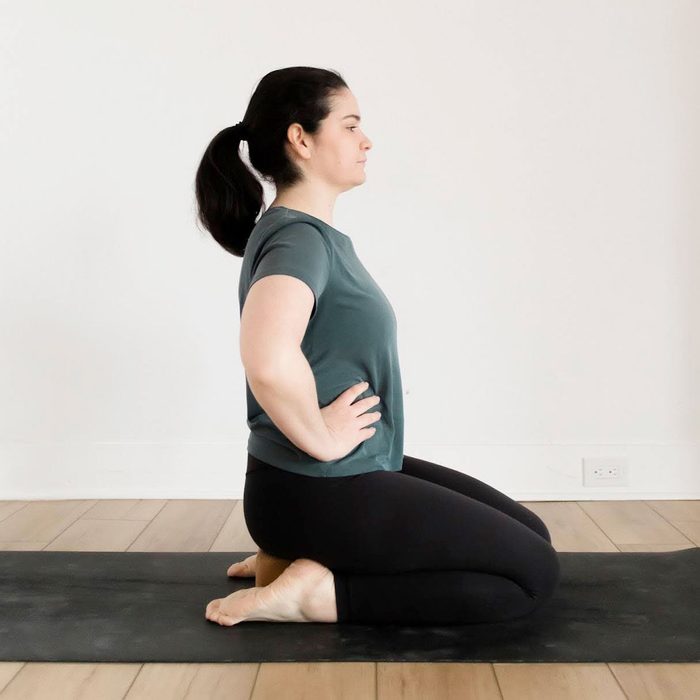
2. Supported hero’s pose TVA breath
How to:
- Sit on your shins with a block between your ankles.
- Place your hands on the side of your waist.
- As you breathe in, expand the sides of your torso.
- As you breathe out, glide your hands towards each other until you can touch the tips of your fingers together and over time interlace them.
- At the end of your exhalation, take a fresh breath in and do it again!
Benefits:
“This is a step further than the bridge pose mentioned above,” Purdon explains. “Sitting in a supported Virasana or Hero’s pose helps you keep your spine tall without effort. When you sit tall, shoulders over your hips, you are in an optimal breathing position where the dome of your diaphragm and the dome of your pelvic floor muscles can work in unison. The action of drawing the side of the abdominal wall closer in conjunction with the breath, further helps mend the two sides of your rectus abdominis together. This exercise is part of the way in which you can heal your diastasis recti postpartum whether you’ve given birth six weeks or six years ago! It is never too late to start!”
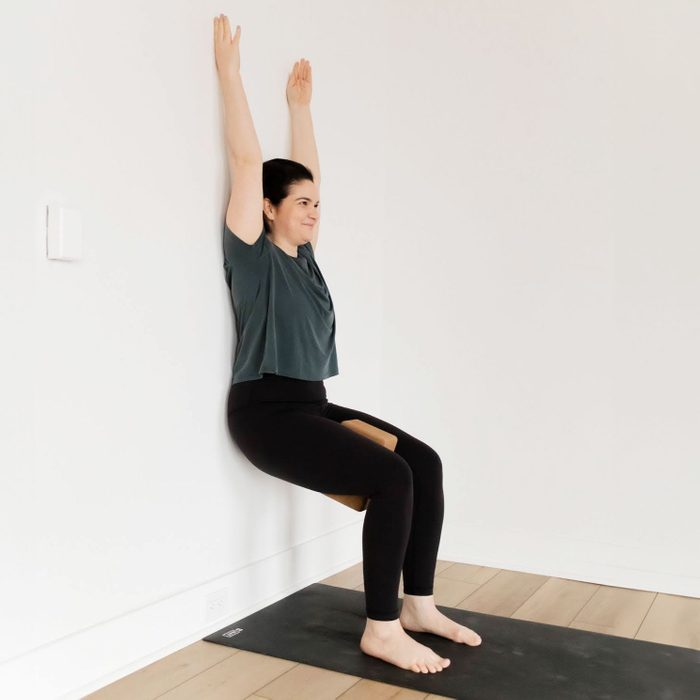
3. Supported chair pose at the wall
How to:
- Stand with your back against the wall.
- Walk your feet out and sit as in Chair Pose.
- Place a block between your inner thighs.
- At first keep your hands around your ribs like it is in supported Hero’s Pose. Over time work your way towards lifting your arms up over your head, palms facing each other and thumbs at the wall.
- As you breathe in, send your upper, middle and lower back towards the wall.
- As you breathe out keep as much of your back against the wall as possible while drawing your front ribs in and towards each other.
Benefits:
An advanced version of the TVA breathing exercise done on your back, this pose “allows you to truly connect to every part of your torso,” Purdon says. “A wall can be your greatest teacher. Here it gives you feedback about where your body is in space. Something that is often so hard to figure out postpartum. This will also serve double duty and strengthen the posterior chain of your body which is important since so much of your back muscles have weakened or atrophied during pregnancy. Also shout out to the quadriceps and hamstrings strengthening that happens here as well. See this as a double tasking self care!”
4 Yoga Poses To Strengthen the Pelvic Floor Muscles, From a Doctor of Physical Therapy
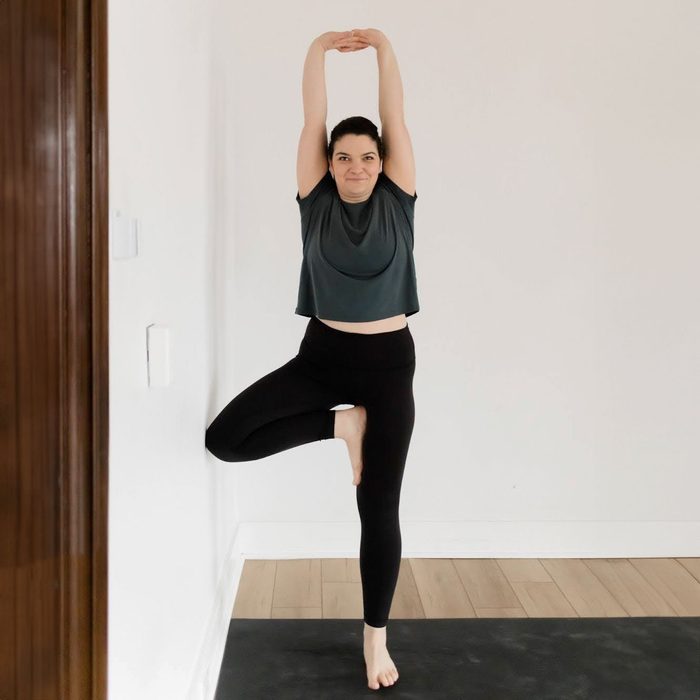
4. Tree pose at the wall
How to:
- Stand by a wall.
- Bring your weight into your right foot and place the sole of your left foot against your inner right thigh.
- Adjust the space between your left knee and the wall so that they touch.
- Use the pressing of your right foot down to the floor, the pressing of your inner left foot against your inner right thigh and the pressing of your knee against the wall to find the centerline of your body from the tip of your tailbone to the crown of your head.
Expert tip: “You can keep your hands at your hips or interlace your fingers, flip your palms and reach your arms up, or hug your outer arms in,” Purdon suggests. “This action closes the circle of energy from your bottom heel and foot pressing down to the heel of your hands reaching up.
Benefits:
“There is a sense of freedom that comes with one leg standing balances,” Purdon says. “Here the wall is used both for support and feedback purposes. This pose challenges your inner eye to notice where your body is in space. While keeping a clear focus on reconnecting to your deep core. Recognizing, practicing and rebuilding your relationship with your center in different ways on the mat will help you take those lessons learned off the mat and into your daily tasks.”
- “Here’s How I Knew I Had Stomach Cancer”: One Patient’s Story Illustrates the Value of a Second Opinion
- New Study: This Calming Exercise Surpasses Cardio in Reducing Blood Pressure
- Following This Nightly Bedtime Ritual Might Help You Lose Weight, Says New Study
- Which Hormones Are Released During Sex? Expert Doctors Name 7
